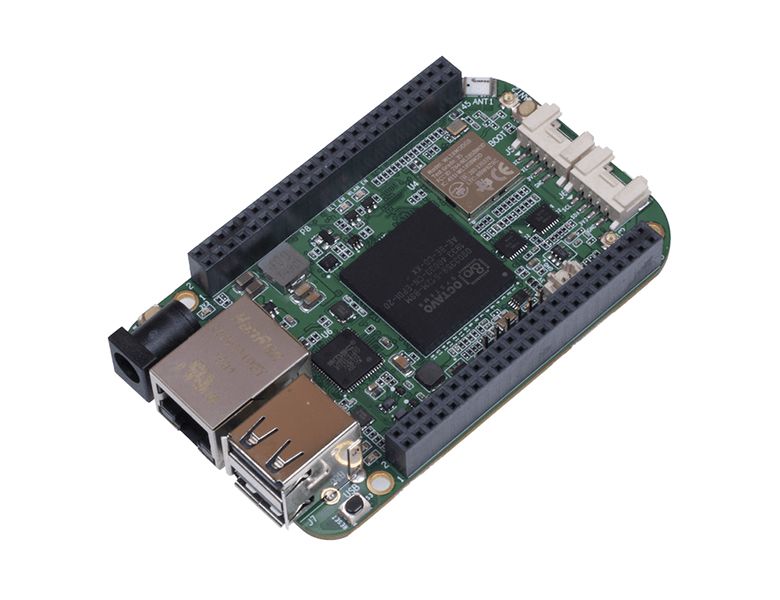
BeagleBone Green Gateway by SeeedStudio
Seeed Studio BeagleBone® Green Gateway is a low cost, open-source, community supported development platform for developers and hobbyists. It is a joint effort by BeagleBoard.org and Seeed Studio. It is based on the classical open-source hardware design of BeagleBone® Black and developed into this differentiated version. The Seeed Studio BeagleBone® Green Gateway includes two Grove connectors, making it easier to connect to the large family of Grove sensors. The on-board HDMI and Ethernet are removed to make room for these wireless features and Grove connectors.
The Seeed Studio BeagleBone® Green Gateway is a combination of Seeed Studio BeagleBone® Green and Seeed Studio BeagleBone® Green Wireless, equipped with both Ethernet and Wireless connectivity.
Boot Linux in less 10 seconds and get started on development in less than 5 minutes with just a single USB cable.
- Fully Compatible with BeagleBone® Black and Seeed Studio BeagleBone® Green
- Processor: AM3358 1GHz ARM® Cortex-A8
- 2×32-bit 200-MHz programmable real-time units (PRUs)
- 512MB DDR3 RAM
- 4KB EEPROM
- 4GB 8-bit eMMC on-board flash storage
- 3D graphics accelerator
- NEON floating-point accelerator
- Ethernet 10/100M bit
- WiFi 802.11 b/g/n 2.4GHz
- USB client for power & communications
- USB host
- SD/MMC Connector for microSD
- Bluetooth 4.1 with BLE
- 2x 46 pin headers
- 2x Grove connectors (I2C and UART)
- DC Jack for power, 12V
Purchase
Contribute
Have some info to add for this board? Edit the source for this page here.
Adafruit Blinka Installation
We use a special library called adafruit_blinka (named after Blinka, the CircuitPython mascot) to provide the layer that translates the CircuitPython hardware API to whatever library the Linux board provides.
For example, on Raspberry Pi we use the python RPi.GPIO library. For any I2C interfacing we'll use ioctl messages to the /dev/i2c device. For SPI we'll use the spidev python library, etc. These details don't matter so much because they all happen underneath the adafruit_blinka layer.
